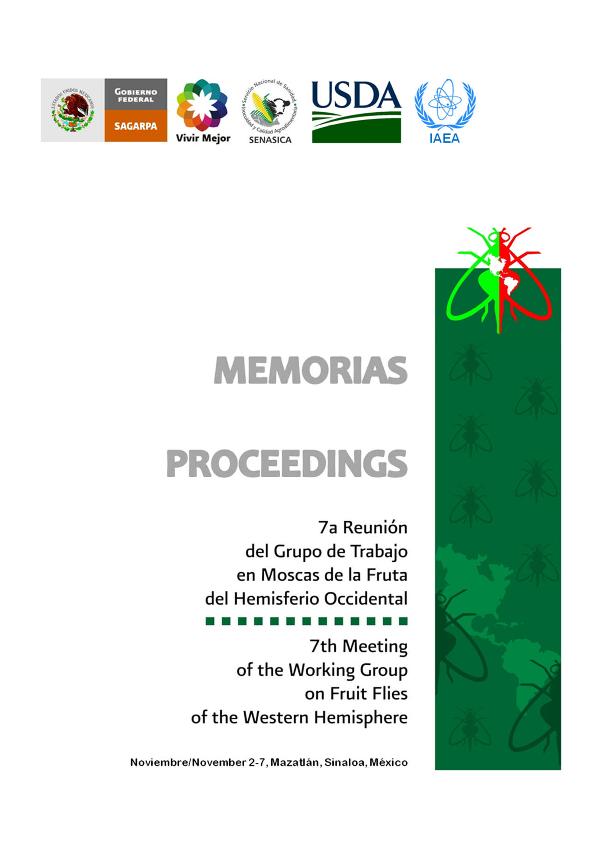Evento
Functional Response Analysis of Diachasmimorpha longicaudata (Ashmead) Reared on Anastrepha fraterculus (Wiedemann)
Tipo del evento:
Reunión
Nombre del evento:
7ma Reunión del Grupo de Trabajo en Moscas de la Fruta del Hemisferio Occidental
Fecha del evento:
02/11/2008
Institución Organizadora:
Gobierno Federal de México. Secretaría de Agricultura y Desarrollo Rural;
Servicio Nacional de Sanidad, Inocuidad y Calidad Agroalimentaria;
Organismo Internacional de Energía Atómica;
Gobierno Federal de Estados Unidos. Departamento de Agricultura;
Título del Libro:
Memorias de la 7ma Reunión del Grupo de Trabajo en Moscas de la Fruta del Hemisferio Occidental
Editorial:
Organismo Internacional de Energía Atómica
Idioma:
Inglés
Clasificación temática:
Resumen
A bioassay with the parasitoid Diachasmimorpha longicaudata reared on third instar Anastrepha fraterculus larvae at 25 ± 1 ºC, 75 ± 5% RH, and 12:12 (L:D) h photoperiod was carry out in order to determine the functional response parameters. The study was performed in the Insectary of PROIMI-CONICET, Biological Control Division, San Miguel de Tucumán, Argentina. Eight A. fraterculus larvae densities were tested independently (1, 2, 3, 5, 15, 30, 60 and 120 larvae per Petri dish without larval diet and covered with mesh). Each larval density was exposed during 3 hours to a single 6-8 days old randomly selected parasitoid female. The densities 1 and 2 were replicated 71 times, densities 3 and 5 were replicated 70 and 68 times respectively, and densities 15 to 120 larvae were replicated 41 times. Low densities were replicated more times in order to obtain a better discrimination between a type II and III functional response curve. Before the experiment, the parasitoids were held in 13x20x25 cm plastic frame cage at a density of ~100 parasitoid, 1:1 sex rate per cage, and they were provided with water and honey. A density-dependence in the proportion of larvae attacked was found, so we fitted the data to the equation proposed by Hassell et al. (1977). The following parameters were recorded: 1) percentage of total parasitism (emerged plus unmerged parasitoids) at different densities; 2) functional response parameters; handling time (Th) and searching rate (a?). A type III functional response was found. Functional response measuring in laboratory may show little resemblance to those obtained on field, but is important to take account, that it could be used to infer basic mechanisms underlying the parasitoid-host interaction, so this kind of experiments could provide important information for biological control programs.
Palabras clave:
FRUIT FLIES
,
PARASITOIDS
,
BIOLOGICAL CONTROL
,
ARGENTINA
Archivos asociados
Licencia
Identificadores
Colecciones
Eventos(PROIMI)
Eventos de PLANTA PILOTO DE PROC.IND.MICROBIOLOGICOS (I)
Eventos de PLANTA PILOTO DE PROC.IND.MICROBIOLOGICOS (I)
Citación
Functional Response Analysis of Diachasmimorpha longicaudata (Ashmead) Reared on Anastrepha fraterculus (Wiedemann); 7ma Reunión del Grupo de Trabajo en Moscas de la Fruta del Hemisferio Occidental; Mazatlán; México; 2008; 160-160
Compartir




